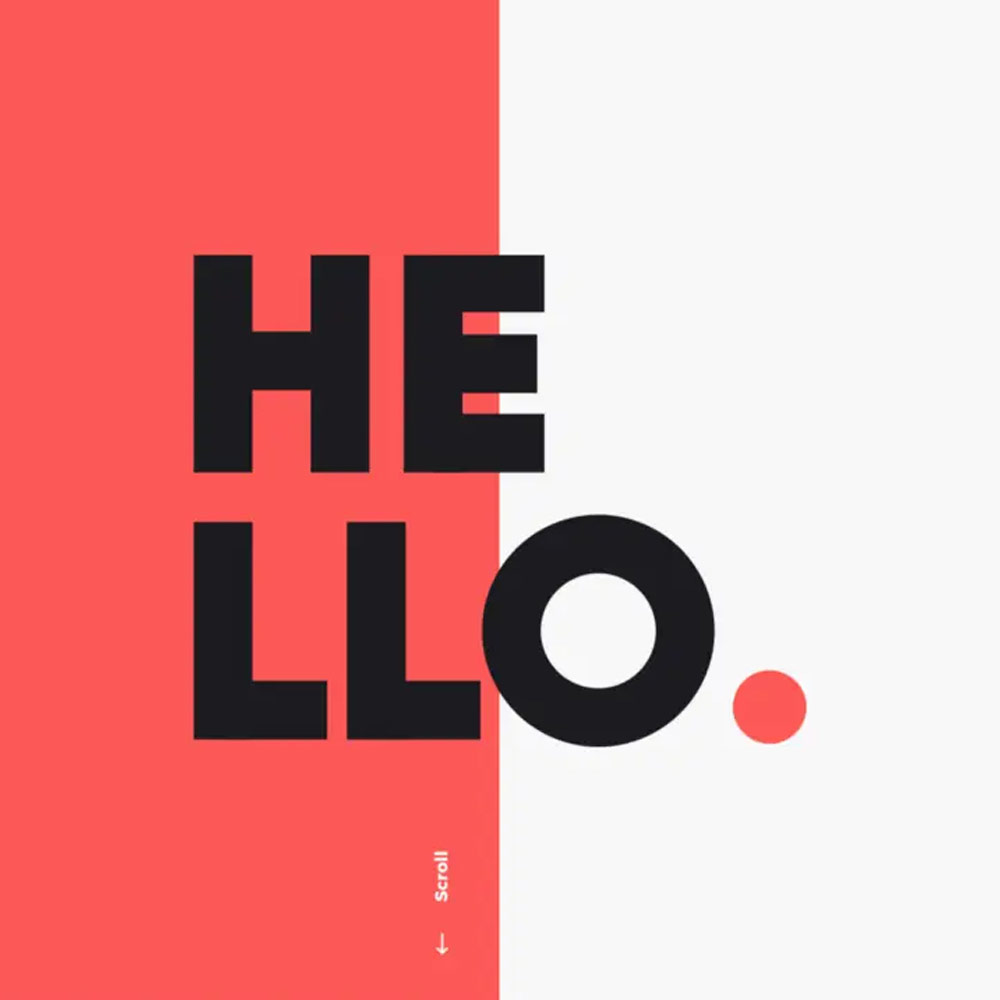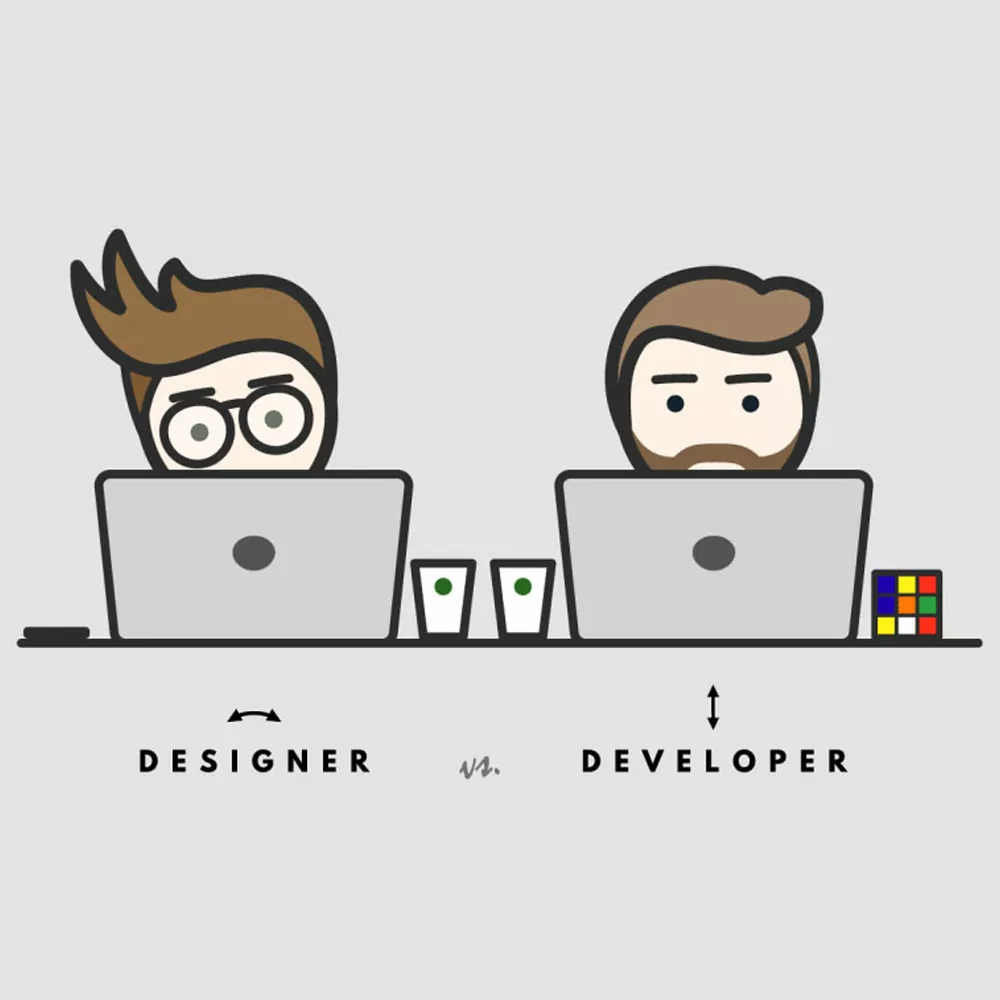
Web Designer vs Web Developer: Understanding the Differences and Choosing Your Path
Web Designer vs Web Developer: What’s the Difference?
Creating and maintaining a successful website requires the combined efforts of skilled professionals in web design and web development. While these two fields are closely related, they have distinct roles and responsibilities. In this article, we will explore the differences between web designers and web developers, their skill sets, tools and technologies, collaboration, career paths, and more. By the end, you’ll have a clear understanding of these roles and be able to make an informed decision about which path to pursue in the world of web design and development.
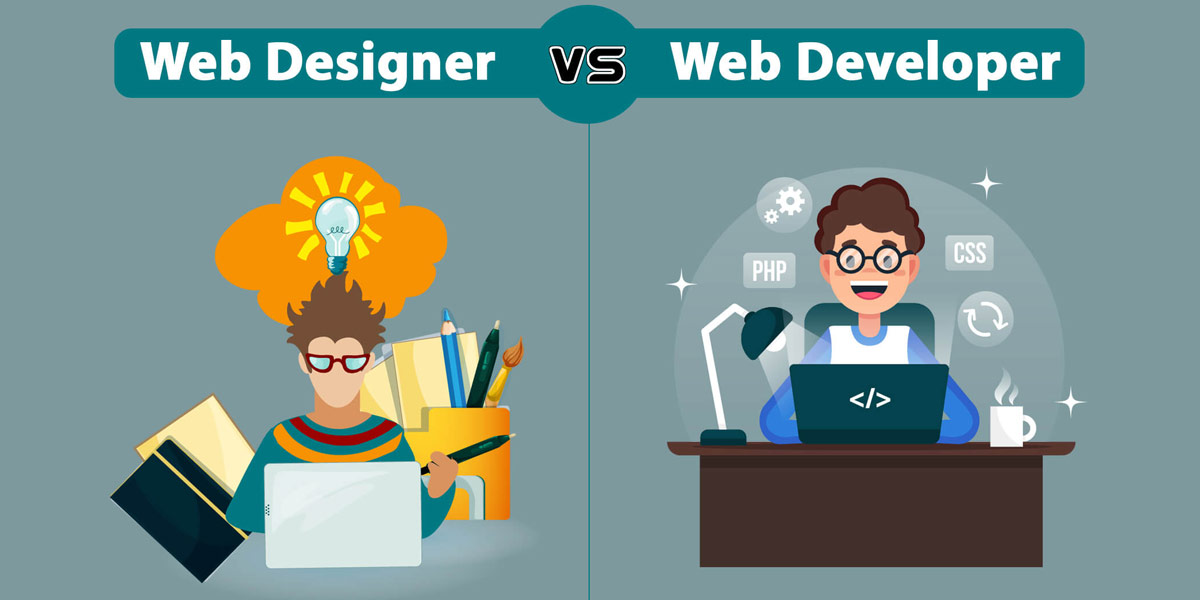
Web Designer vs Web Developer Understanding the Differences and Choosing Your Path
What is Web Design?
Web design encompasses the creative process of conceptualizing, planning, and designing the visual elements of a website. It focuses on creating aesthetically pleasing and user-friendly interfaces that effectively convey information. Web designers utilize their knowledge of design principles, user interface (UI) design, and user experience (UX) design to craft engaging websites.
To excel in web design, one needs to be proficient in various design software programs, such as Adobe Creative Suite, CorelDraw, and Inkscape. These tools enable web designers to create visually stunning graphics, illustrations, and layouts that enhance the overall user experience. Mastering web design involves learning and implementing a series of steps, including understanding colour theory, typography, layout design, and responsive design principles.
What is Web Development?
Web development, on the other hand, involves the technical implementation of the website’s structure, functionality, and interactive features. It focuses on translating the visual design into a functional website by utilizing programming languages and frameworks. Web developers possess a deep understanding of coding languages like JavaScript, HTML, CSS, and various libraries such as jQuery.
Web developers employ a range of tools and technologies to build and maintain websites. These include integrated development environments (IDEs), code editors, version control systems, and content management systems (CMS). They are responsible for writing clean and efficient code, optimizing website performance, ensuring cross-browser compatibility, and implementing security measures.
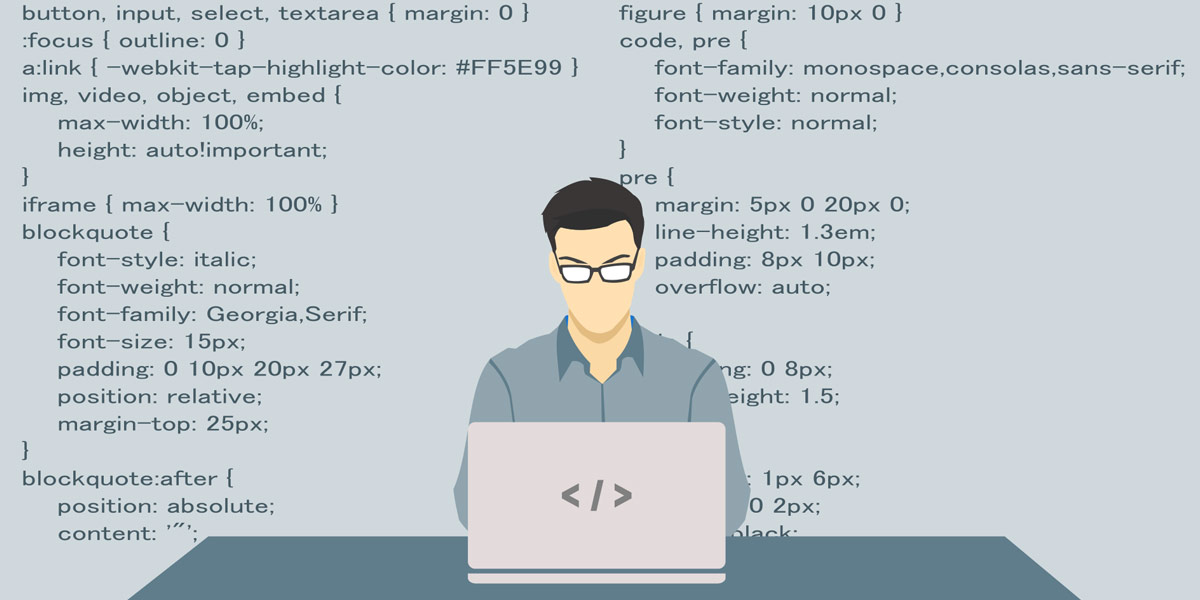
Web Designer vs Web Developer: What is Web Development?
Roles and Responsibilities
Web designers are responsible for the overall look and feel of a website. They use their creative skills to design engaging and visually appealing layouts, select colour schemes, and typography, and create intuitive user interfaces. Web designers also consider the user experience and ensure that the website is user-friendly and easy to navigate.
Web developers, on the other hand, bring web design to life by writing code and implementing the functionality of the website. They are skilled in programming languages such as HTML, CSS, and JavaScript, and may also work with server-side languages like PHP or databases like MySQL. Web developers focus on creating interactive features, optimizing website performance, and ensuring cross-browser compatibility.
Skill Sets
Web designers need a combination of artistic and technical skills. They should have a strong sense of aesthetics, and an understanding of colour theory, typography, and layout design. Proficiency in design software like Adobe Photoshop, Illustrator, or Sketch is essential. Additionally, web designers should be familiar with web design principles, and user experience (UX) design, and have a basic understanding of HTML and CSS.
Web developers require strong programming skills and proficiency in coding languages such as HTML, CSS, and JavaScript. They should also know server-side programming languages and frameworks like PHP, Python, Ruby on Rails, or Node.js. Understanding databases, version control systems, and responsive web design is also crucial for web developers.
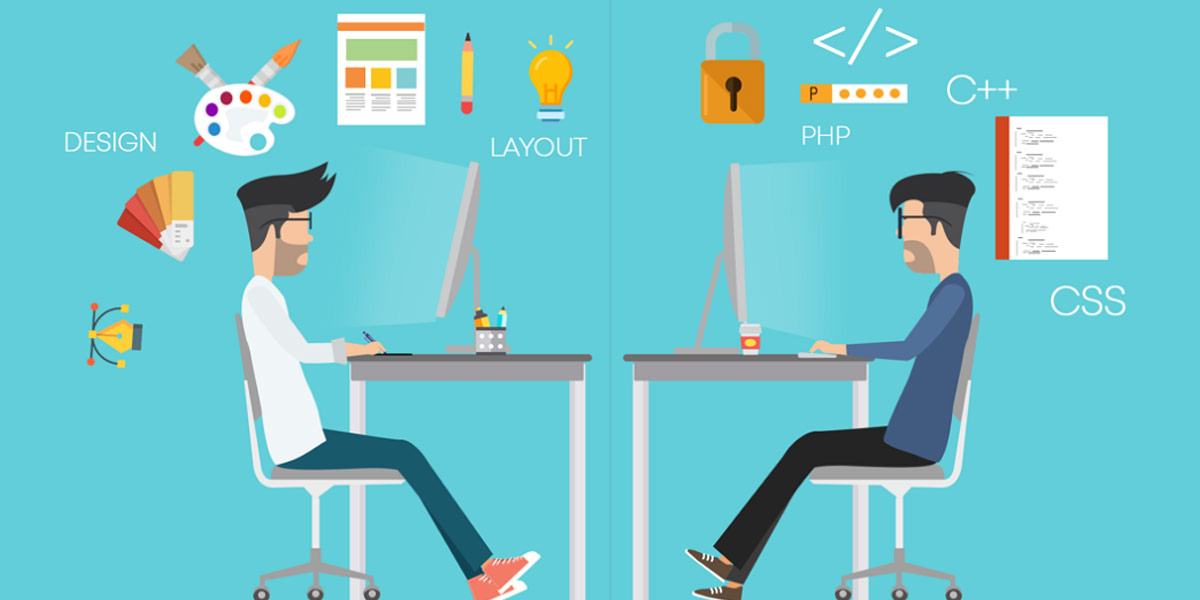
Web Designer vs Web Developer: Skill Sets
Tools and Technologies
Web designers utilize various design tools to create visually appealing layouts and prototypes. Some popular tools include Adobe Photoshop, Illustrator, Sketch, Figma, and InVision. These tools allow designers to create mockups, wireframes, and interactive prototypes to present their design concepts effectively.
Web developers use a wide range of tools and technologies to build functional websites. Text editors or Integrated Development Environments (IDEs) like Visual Studio Code, Sublime Text, or JetBrains WebStorm are commonly used for writing and editing code. Frameworks and libraries like Bootstrap, React.js, or AngularJS provide developers with ready-to-use components and simplify the development process.
Collaboration and Workflow
In many web design and development projects, a collaboration between web designers and web developers is crucial for success. They often work together to ensure that the final product meets the desired goals and requirements. Web designers and web developers collaborate on the overall project vision, design concepts, and functionality implementation.
The workflow in web design and development projects typically involves multiple stages. It starts with gathering requirements and creating a design brief. Web designers then proceed to create wireframes and visual designs, which are shared with web developers for implementation. Once the development phase is complete, web designers review and provide feedback on the final website to ensure it aligns with the initial design.
Differences between Web Design and Web Development
While web design and web development are closely related, they have distinct differences in focus, objectives, and skill sets. Understanding these differences is essential when deciding which path to pursue.
- Focus and Objectives: Web design primarily focuses on creating an appealing visual experience and optimizing the user interface (UI) and user experience (UX) design. It aims to create a visually engaging and user-friendly website. Web development, on the other hand, emphasizes functionality and technical aspects, such as coding, server-side scripting, and database management. The primary objective is to bring the web design to life and ensure the website functions smoothly.
- Visual vs. Technical Aspects: Web design places more emphasis on aesthetics, colour schemes, typography, and visual elements. Designers work on creating visually appealing layouts that align with the brand identity and target audience. In contrast, web development focuses on the technical implementation of the website. Developers write code, optimize website performance, and ensure cross-browser compatibility.
- User Experience vs. Functionality: Web design aims to enhance the user experience by creating intuitive and user-friendly interfaces. Designers consider factors like ease of navigation, clear call-to-action buttons, and logical information hierarchy. Web development focuses on implementing the desired functionality of the website, such as interactive features, dynamic content, and form submissions.
- Creativity vs. Problem-Solving: Web design allows for more creativity and artistic expression. Designers have the freedom to experiment with different layouts, colour palettes, and visual elements to create unique and visually appealing websites. Web development requires strong problem-solving skills, as developers need to overcome technical challenges and ensure the website functions smoothly across different devices and browsers.

Web Designer vs Web Developer: Differences between Web Design and Web Development
Overlapping Areas
While web design and web development have their differences, there are also overlapping areas where the two disciplines intersect. Understanding these intersections is crucial for web professionals.
Both web designers and web developers need to have a basic understanding of HTML and CSS. This knowledge helps facilitate collaboration and effective communication between the two roles. Additionally, having an understanding of design principles and UX concepts can benefit web developers in creating visually appealing and user-friendly websites.
Career Paths and Salary
The career paths and salary prospects for web designers and web developers can vary based on factors such as experience, skill level, and location. Both fields offer promising career opportunities in the UK market.
Web designers have the option to pursue careers as UI/UX designers, or graphic designers, or specialize in specific design areas such as mobile app design or responsive web design. In the UK market, the average salary for web designers ranges from £40,000 to £60,000 per year, depending on factors such as experience and location.
Web developers can choose from various career paths, including front-end developers, back-end developers, full-stack developers, or specialize in specific programming languages or frameworks. In the UK market, the average salary for web developers ranges from £45,000 to £80,000 per year, depending on factors such as experience, skill set, and location.
It’s important to note that salary ranges may vary based on the specific company, industry, and demand for web designers and web developers in a particular region. It’s always beneficial to stay updated on industry trends and continuously enhance your skills to maximize career growth and earning potential in the UK web design and development market.
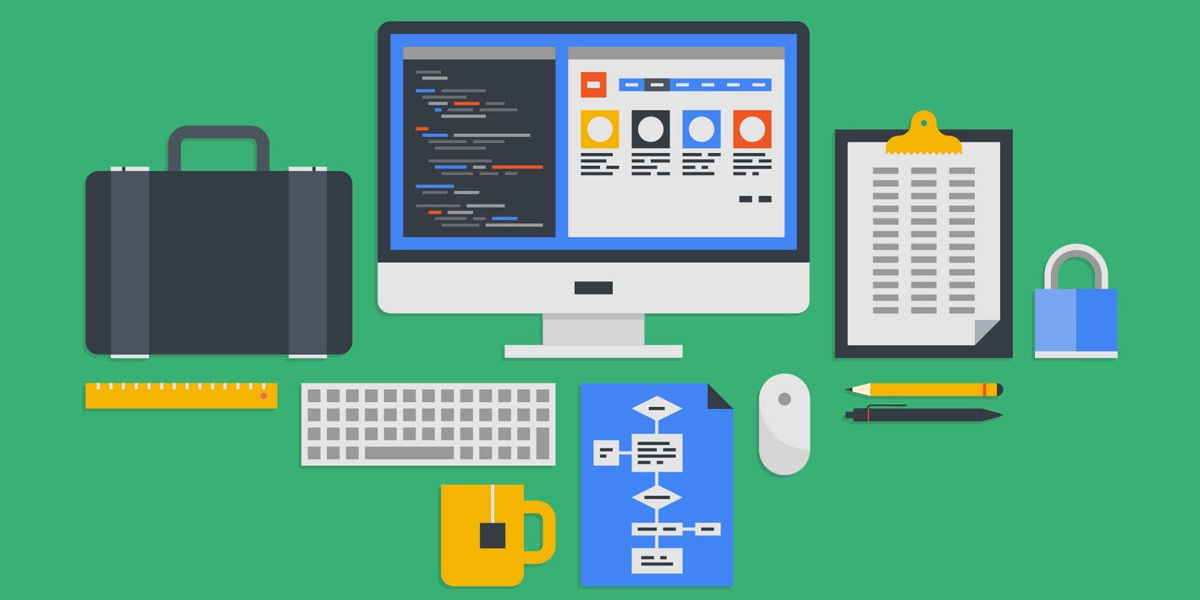
Web Designer vs Web Developer: Career Paths and Salary
Importance of UI/UX Design
UI/UX design plays a crucial role in web development projects. It focuses on creating visually appealing and user-friendly interfaces that enhance the overall user experience. UI/UX design involves conducting user research, creating wireframes and prototypes, and iteratively improving the design based on user feedback.
Integrating UI/UX design principles into the web development process can lead to improved user satisfaction, increased user engagement, and higher conversion rates. UI/UX design ensures that websites are intuitive and accessible, and provide a positive user experience across different devices.
Choosing the Right Path
When deciding between web design and web development, it’s important to consider various factors, including personal interests, skill sets, career prospects, and market demand. Here are some key considerations:
- Personal Interests: Evaluate whether you enjoy working more with aesthetics, visuals, and user experience (web design) or prefer coding, problem-solving, and technical aspects (web development).
- Skill Sets: Assess your existing skills and determine which field aligns better with your strengths. If you have a knack for visual design and creativity, web design may be a better fit. If you enjoy logical thinking, problem-solving, and writing code, web development may be the path for you.
- Career Prospects: Research the job market and demand for both web designers and web developers in your area. Consider the growth potential, job opportunities, and salary prospects for each field.
- Personal Growth: Consider which field aligns with your long-term goals and offers opportunities for continuous learning and growth. Both web design and web development are evolving fields, and staying updated with the latest trends and technologies is crucial.
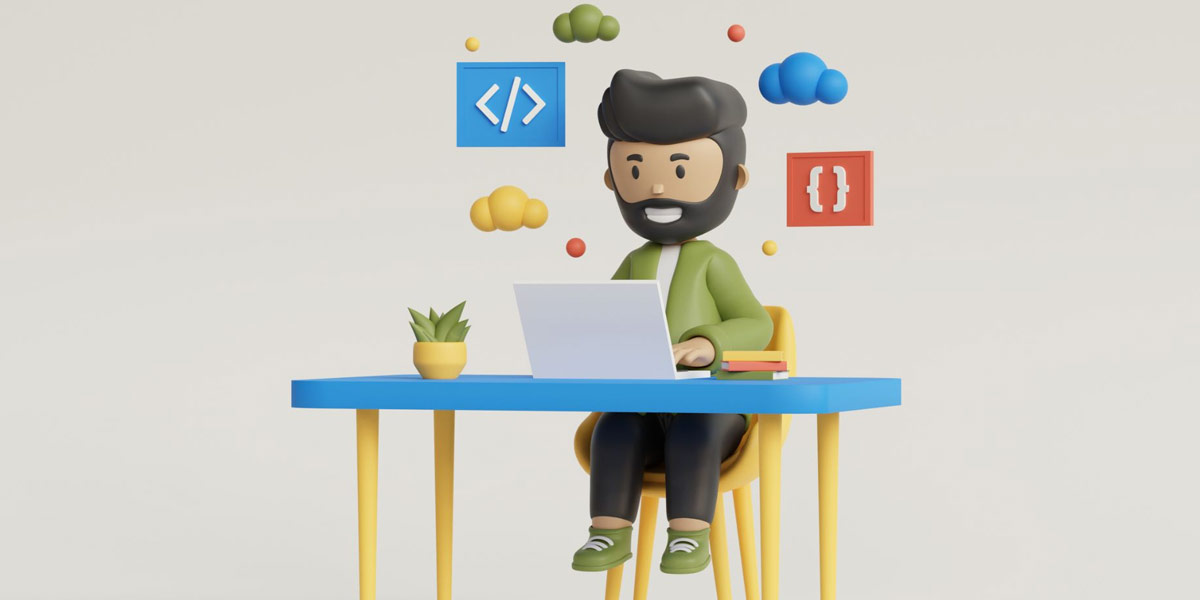
Web Designer vs Web Developer: Choosing the Right Path
Conclusion
Web design and web development are two distinct yet interconnected fields that play vital roles in creating successful websites. Web designers focus on the visual aspects, user experience, and aesthetics, while web developers handle the technical implementation and functionality. Both roles are essential for building functional and visually appealing websites.
By understanding the differences and similarities between web design and web development, you can make an informed decision about which path to pursue. Consider your interests, skills, career prospects, and personal growth opportunities when choosing between web design and web development. Regardless of your choice, both fields offer exciting career opportunities in the ever-growing digital landscape.
FAQs
What is the difference between a web designer and a web developer?
A web designer focuses on the visual aspects and user experience (UX) design of a website, while a web developer handles the technical implementation and functionality.
What are the responsibilities of a web designer?
Web designers are responsible for creating visually appealing layouts, selecting colour schemes, choosing typography, and optimizing the user interface (UI) and user experience (UX) design.
What are the responsibilities of a web developer?
Web developers are responsible for writing code, implementing website functionality, optimizing performance, ensuring cross-browser compatibility, and handling server-side scripting and database management.
What skills does a web designer need?
Web designers need skills in graphic design, colour theory, typography, layout design, knowledge of design software like Adobe Photoshop or Sketch, and an understanding of web design principles and UX concepts.
What skills does a web developer need?
Web developers need proficiency in programming languages such as HTML, CSS, JavaScript, and server-side languages like PHP or Python. They should also know about databases, version control systems, and responsive web design.
How do web designers and web developers collaborate?
Web designers and web developers collaborate throughout the project, working together on the project vision, design concepts, and functionality implementation. They communicate, share ideas, and ensure the final product aligns with the initial design.
Can a web designer also be a web developer, and vice versa?
Yes, some professionals possess skills in both web design and web development. They are known as “hybrid” or “full-stack” professionals, capable of working in both areas.
Which role, web designer or web developer, is more visually creative?
Web designers are generally more focused on visual creativity, as they work with colour schemes, typography, and layout design to create visually appealing websites.
Which role, web designer or web developer, is more focused on coding?
Web developers are more focused on coding, as they write and optimize the code that brings the web design to life and ensures the website functions smoothly.
How much does a web designer earn compared to a web developer?
Salaries vary based on factors like experience, skill set, and location. Generally, web developers tend to have higher earning potential compared to web designers.
Is it necessary to hire both a web designer and a web developer for a website?
It depends on the project requirements and scope. For complex websites, it is common to have both a web designer and a web developer to ensure a cohesive and successful end product. However, for simpler projects, one professional might handle both roles.
What are the key differences between web design and web development?
Web design focuses on visual aesthetics, UI/UX design, and creating appealing layouts, while web development emphasizes coding, functionality implementation, and technical aspects of website creation.
Can a web designer learn web development, and vice versa?
Yes, a web designer can learn web development and vice versa. There are resources and courses available to gain knowledge and skills in both areas.
What tools and technologies do web designers and web developers use?
Web designers use tools like Adobe Photoshop, Illustrator, Sketch, or Figma for design purposes, while web developers use text editors or IDEs like Visual Studio Code or Sublime Text, along with frameworks and libraries such as Bootstrap or React.js.

With over two decades of web design and development expertise, I craft bespoke WordPress solutions at FallingBrick, delivering visually striking, high-performing websites optimised for user experience and SEO.




